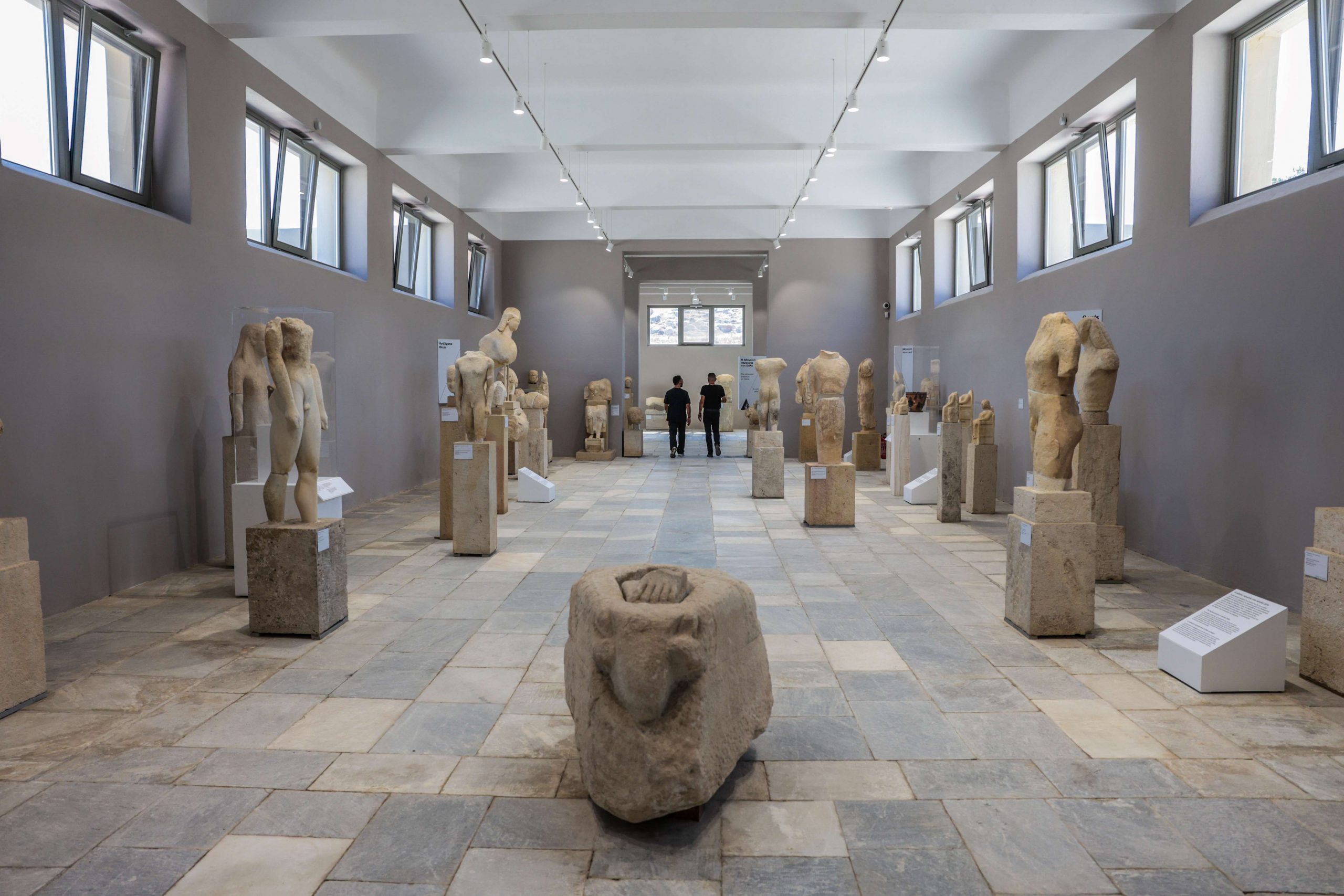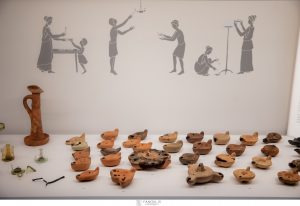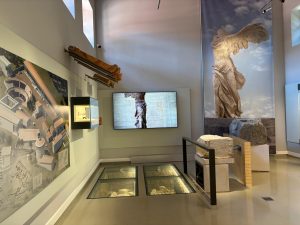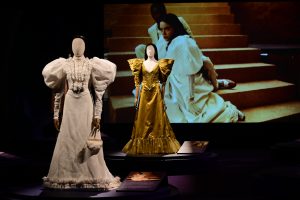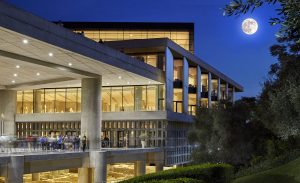It was one of the first museums built and designed for that purpose in Greece, within a significant archaeological site scattered over the whole of a small and uninhabited island. And as of this month, the now thoroughly renovated, expanded and upgraded Delos Archaeological Museum is once again ready to receive visitors by the boat-load from nearby Mykonos.
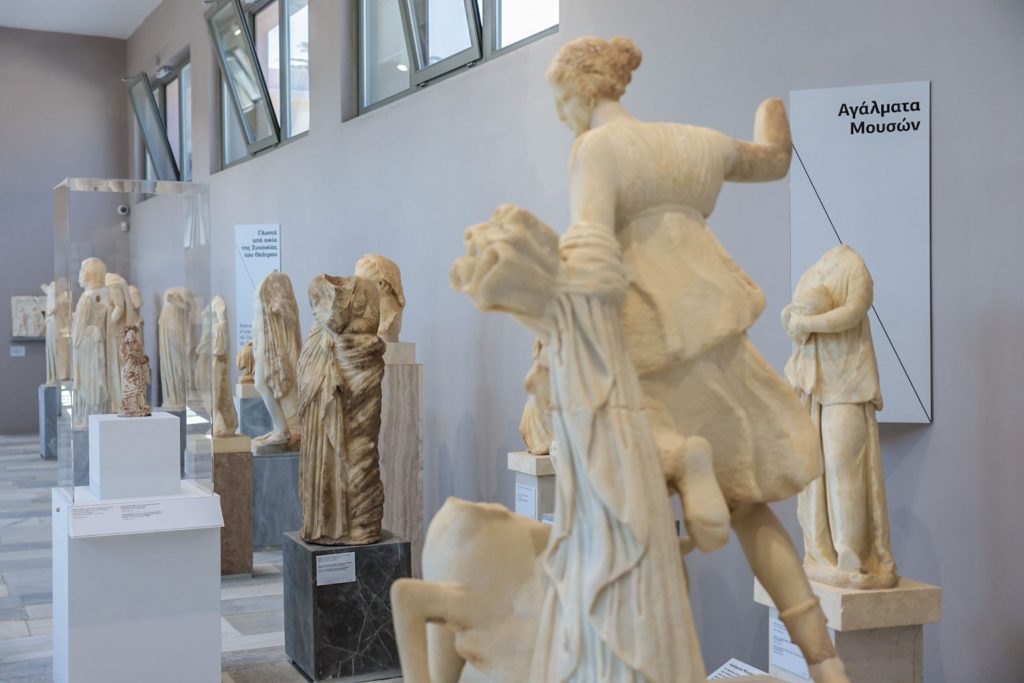
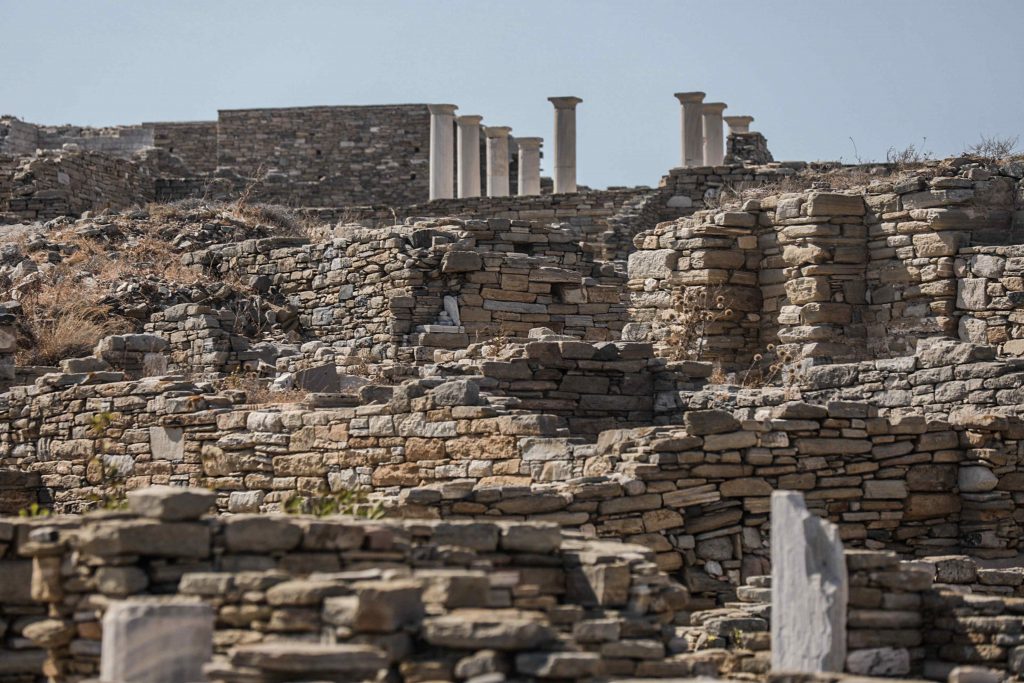
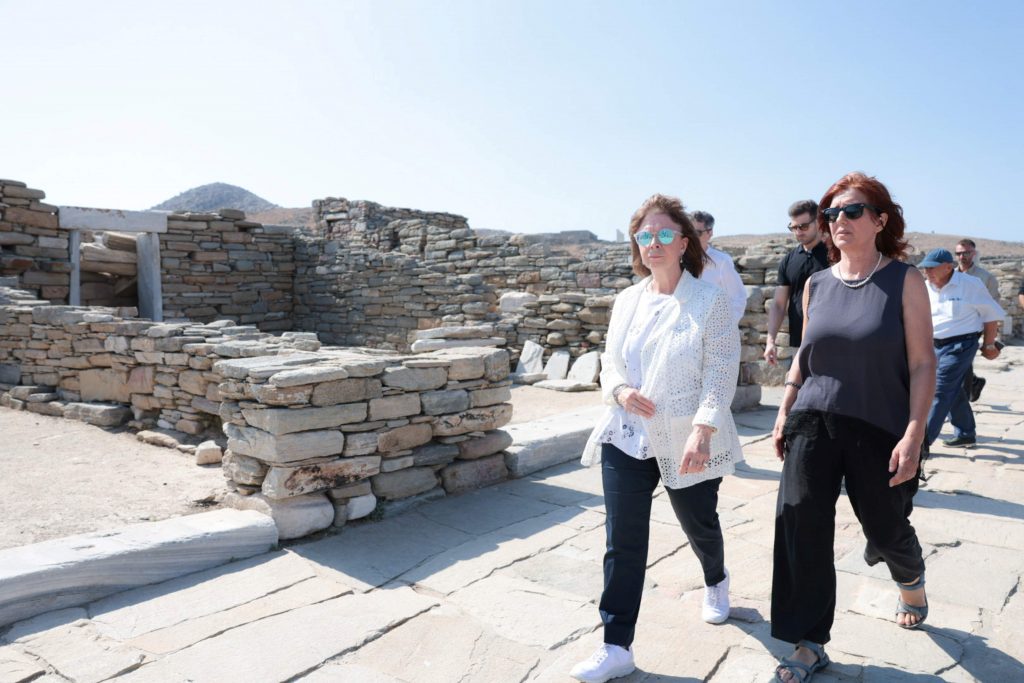
President of Greece Katerina Sakellaropolou attends the museum’s inauguration.
The institution, which was re-opened with some pomp and ceremony just over a week ago in the presence of Greece’s top leadership, dates back to the early 20th century. Construction began in 1904, when the modern Greek state was still only seven decades old, and over a century of exposure to Delos’ sun and maritime climate had taken a heavy toll on the facility.

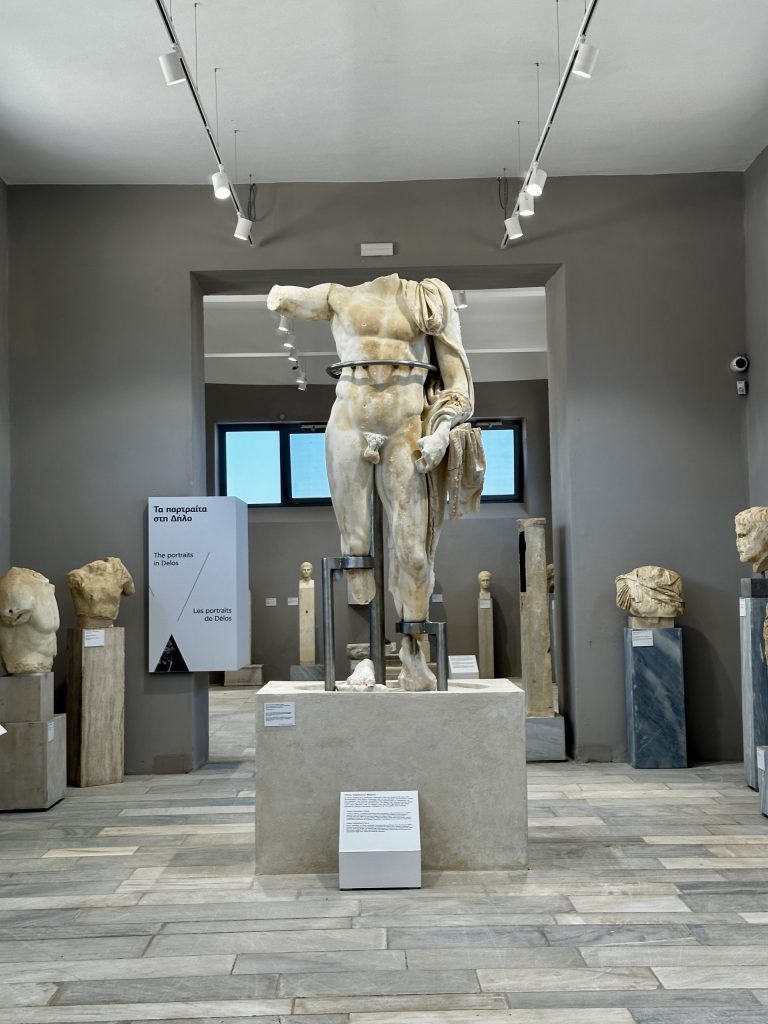
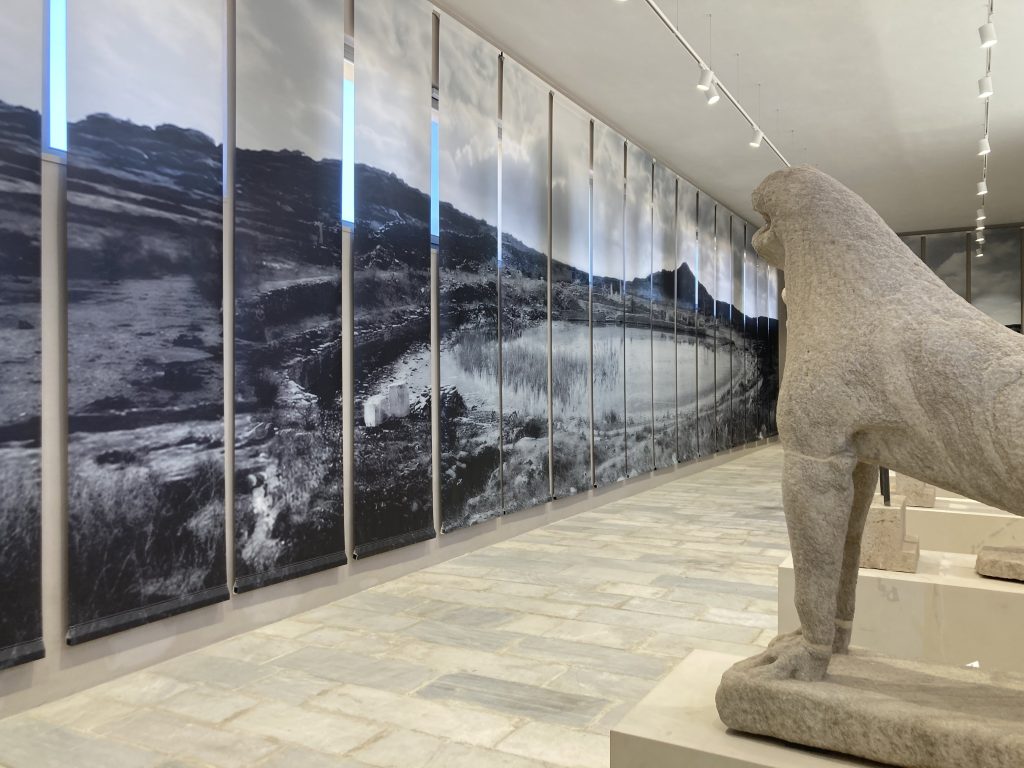
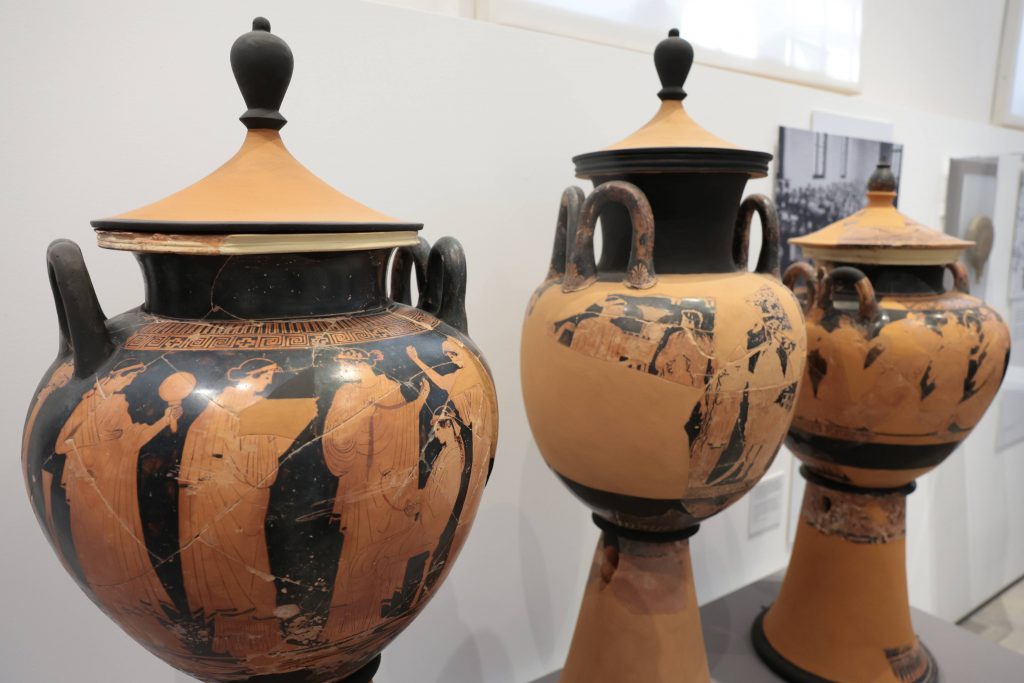
According to ancient Greek myth, Delos was the birthplace of the Olympian gods Apollo and his twin sister Artemis, and was home to the sanctuary of the former in antiquity. The island served as a major commercial and trading port in Classical antiquity, attracting merchants, pilgrims and travelers from around the Mediterranean world at its peak. The tiny isle, which is less than three and a half square kilometers in size, was also one of the first sites to which Christianity spread during the Roman era.
